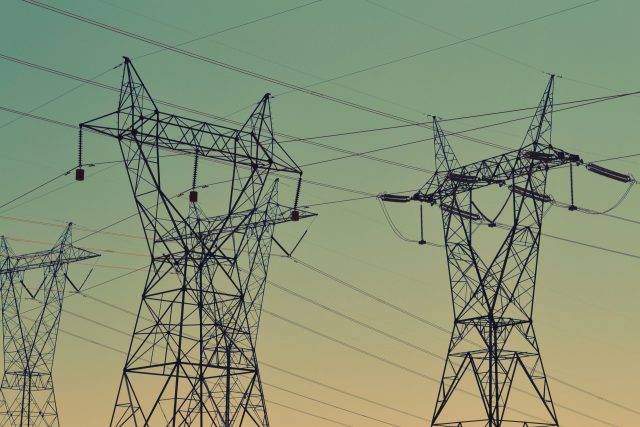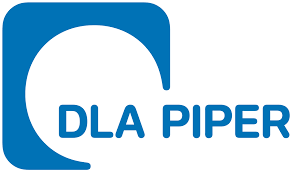The LSE, proposed on February 4, 2025, establishes a new regulatory framework for the National Electricity System (SEN) and replaces Mexico’s current Electricity Industry Law (LIE), which was published in the Official Gazette on August 11, 2014 and will be replaced upon the LSE’s entry into force.
The LSE was introduced alongside bills enacting the new Public State-Owned Enterprise Federal Electricity Commission Law, Energy Planning and Transition Law, National Energy Commission Law, and Geothermal Energy Law.
The LSE’s implementation aligns with the constitutional reform of Articles 25, 27, and 28, published in the Official Gazette on October 31, 2024. This reform redefined the legal status of state productive enterprises as public enterprises, aiming to reshape the structure of the Mexican electricity sector.
The new regulation reaffirms the state’s control over electricity planning, transmission, and distribution, while allowing private entities to participate in electricity generation and commercialization under specific conditions. Additionally, it establishes the Federal Electricity Commission (CFE)’s predominant role in electricity generation, requiring it to maintain a minimum participation of a 54-percent share of the average energy injected into the SEN each calendar year.
Below, we outline the key aspects of the LSE.
Main objectives of the LSE
-
- Ensure Mexico’s energy security and self-sufficiency
-
- Guarantee the efficiency, quality, continuity, accessibility, security, reliability, and sustainability of the SEN and the electricity sector
-
- Recognize the state’s predominance in electricity sector activities
-
- Define the scope of private sector participation in electricity sector activities that are not exclusively reserved for the state, and
- Establish guidelines for promoting clean energy, energy transition, and the reduction of pollutant emissions.
Predominance of the CFE
-
- The LSE defines “predominance†as the state’s preferential position over private entities in electricity generation and commercialization activities, as it is responsible for ensuring the reliability, security, continuity, and accessibility of the public electricity service.
-
- The LSE grants the CFE the right to generate at least 54 percent of the average energy injected into the SEN per calendar year.
-
- This predominance could result in the preferential dispatch of CFE-owned power plants to meet the 54-percent quota.
- Furthermore, this predominance may conflict with LSE’s stated objectives of ensuring efficiency, quality, reliability, continuity, security, and sustainability within the SEN.
Private sector participation
-
- Both the state and private entities may engage in electricity generation and commercialization.
- Private entities may engage in generation activities individually or in collaboration with the state.
Generation modalities for private entities
-
- Distributed generation. This refers to electricity generation by power plants with a capacity of less than 0.7 megawatts (MW), which may operate without requiring a generation permit from the National Energy Commission (NEC). These generators may sell their output through the basic service supplier, subject to the requirements set forth in the LSE. This represents an increase of 0.5 MW compared to the maximum capacity allowed under the LIE for this generation modality.
-
- Self-consumption. This is defined as electricity generation by power plants with a capacity of 0.7 MW or greater, intended to meet the onsite energy needs of the holder of a valid generation permit. This concept replaces the Isolated Supply scheme provided under the LIE. Two types of self-consumption are established:
(i) Isolated self-consumption: Electricity production without a grid connection, and(ii)Â Interconnected self-consumption: Electricity production with a grid connection, allowing excess energy to be sold exclusively to the CFE. Backup schemes are required for intermittent generation.
- Self-consumption. This is defined as electricity generation by power plants with a capacity of 0.7 MW or greater, intended to meet the onsite energy needs of the holder of a valid generation permit. This concept replaces the Isolated Supply scheme provided under the LIE. Two types of self-consumption are established:
-
- Generation for the wholesale electricity market. This involves the production of electricity and associated products by power plants with a capacity of 0.7 MW or greater, intended for commercialization in the wholesale electricity market. Private entities holding the required permit from the NEC may generate and commercialize electricity without any capacity limit.
- Cogeneration. The LSE also allows for electricity generation under the cogeneration modality. Under this scheme, capacity is limited to the power obtained from unused thermal energy. Mandatory dispatch applies only to the electricity required to meet the thermal needs of the associated industrial process.
Mixed development and mixed investment
The LSE allows for the joint development of power plants between private entities and the CFE through the following schemes:
-
- Long-term production. Through this scheme, private developers build power generation projects and the CFE exclusively purchases all energy and associated products without capital contribution from the state. These projects are governed by electricity sector planning and are represented in the wholesale electricity market by the CFE. Power plants under this scheme may not operate under any other modality or commercialize excess energy.
-
- Mixed investment. This scheme enables the joint development of generation projects in which the CFE must hold at least 54-percent direct or indirect participation. This modality allows the CFE to acquire energy and associated products while enabling power plants to commercialize their capacity to third parties, subject to contracts and regulations issued by the Ministry of Energy (SENER).
- Other schemes. The LSE also opens the possibility of implementing projects under any other scheme defined by the LSE regulations or general provisions issued by SENER.
Wholesale electricity market
The National Center for Energy Control (Centro Nacional de Control de EnergÃa, or CENACE) remains responsible for the operation and management of the wholesale electricity market. The LSE eliminates CENACE’s ability to contract third parties for the provision of ancillary services for its operation. The wholesale electricity market is defined as the transaction system, operated by CENACE, for the purchase and sale of electricity, capacity, ancillary services, and other associated products, using economic dispatch while adhering to SEN security and reliability criteria, where market participants may conduct the transactions specified in the LSE.
Electricity Sector Development Plan (PDSE)
According to the LSE, SENER will prepare and supervise the PDSE, which will establish the guidelines for the electricity system expansion and permit issuance. In this context, a system of “simplified permits” is foreseen for certain strategic projects. Any expansion or modernization of transmission and distribution networks will require SENER’s authorization.
Creation of the NEC
The LSE replaces the Energy Regulatory Commission and the National Hydrocarbons Commission with the NEC. This new agency will assume regulatory and supervisory functions in the electricity sector.
CFE
As a public state-owned enterprise with a social mission, the CFE will consolidate all its subsidiaries and certain affiliates, according to the LSE.
Public transmission and distribution service
The LSE establishes that these services are classified as strategic areas exclusively reserved for the state. The LSE eliminates the possibility of partnerships or contracts with private entities for the financing, installation, maintenance, management, and operation of infrastructure related to these services.
Basic supply
Contrary to the provisions of the LIE, the LSE establishes that only the CFE may provide basic supply, ensuring electricity is delivered to consumers at the lowest possible cost.
Energy storage
The LSE grants SENER the authority to determine how energy storage systems may participate in the electricity industry, without specifying technical or operational details. This includes SENER’s ability to regulate the integration of energy storage systems into the electricity system.
Social impact assessment in the energy sector
All electricity sector projects must obtain a Social Impact Assessment in the Energy Sector from SENER. In addition to measuring each project’s possible social impact, this assessment will establish mitigation measures aimed at protecting human rights and sustainability in affected communities.
Clean Energy Certificates (CELs)
The obligation to promote clean energy and the CELs scheme is maintained under the LSE. However, the issuance of CELs to power plants will no longer depend on ownership or the commercial operation start date. This allows power plants operational before the LIE came into effect to also receive CELs.
This change could have an economic impact on power plants that, under the LIE and its administrative provisions, were originally entitled to these certificates.
Energy justice
The LSE introduces an energy justice framework, aimed at reducing energy poverty; reducing social and gender inequalities in energy use; and promoting regional development and shared prosperity by ensuring access to reliable, affordable, secure, and clean energy and infrastructure. It also includes expanding inclusive participation opportunities, particularly those related to indigenous participation, in local energy supply chains.
Transitory articles
The LSE includes transitory provisions for implementing the new regulatory framework and phasing out previous structures. Key provisions include those related to:
-
- Article 4. Within 180 days of the LSE’s entry into force, the NEC must review and update methodologies for transmission pricing and regulated tariffs for public transmission service.
-
- Article 5. Permits, contracts, and administrative acts granted under the Public Service of Electric Power Law will remain valid until their expiration, governed by the terms under which they were granted and the regulations in force at the time of their formalization. However, they may not be extended once their validity period ends.
- Article 9. Permits, contracts, and administrative acts granted under the LIE will also remain in force until their expiration, governed by the terms under which they were granted and the regulations in force at the time of their formalization. However, they may not be extended once their validity period ends.
For more information, please contact the authors.



